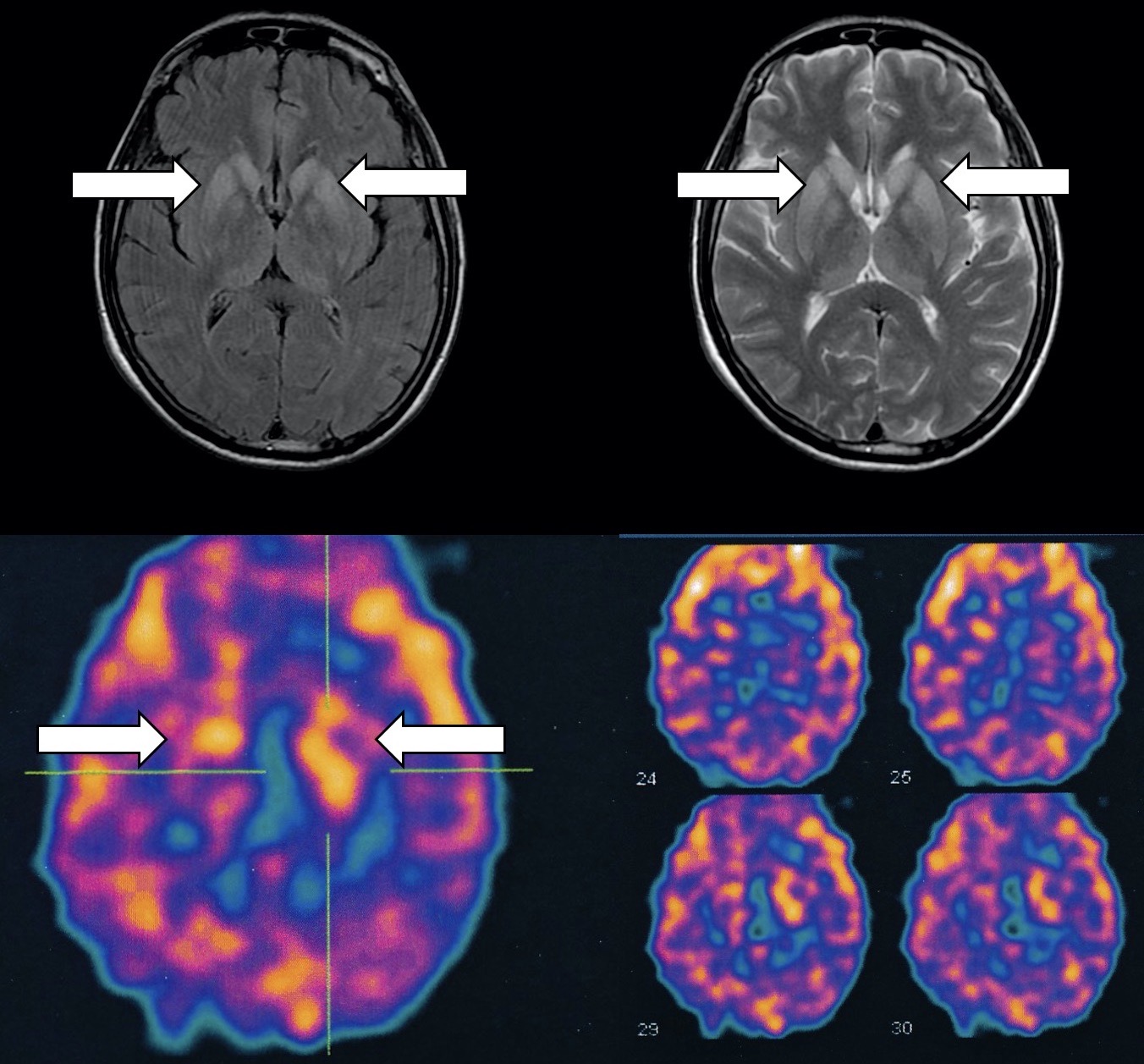Objective: Our objective is to report a case of sporadic CJD (CJD) in a 57-years-old male patient. It started with severe insomnia followed by eyelid opening apraxia and rapidly progressive ataxia. Furthermore, we discuss the 99mTc-TRODAT-1 brain SPECT findings.
Background: In 1920 Hans Gerhard Creutzfeldt and later, Alfons Maria Jakob described the first cases of the disease, known by the eponymous of Creutzfeldt-Jakob disease (CJD). The human prion diseases comprise Creutzfeldt–Jakob disease, variably protease-sensitive prionopathy, Gerstmann–Straussler–Scheinker disease, fatal familial insomnia, and Kuru. CJD is the prototype of transmissible spongiform encephalopathies. According to Parchi et al., there are six CJD subtypes. The main determinants are the host genotype at the polymorphic codon 129 (methionine, M or valine, V) in the gene encoding the prion protein (PRNP), but in most cases, it is sporadic. Studies estimate incidence between 0,5 to 1.5 per million.
Goldstein and Cogan first described eyelid opening apraxia in 1965, who called it “apraxia of lid opening.”
Method: The patient is a 57-years-old male. He started with severe insomnia followed by eyelid opening apraxia and rapidly progressive ataxia.The neurologic exam disclosed a patient with subcortical dementia, eyelid opening apraxia, severe axial ataxia, parkinsonism, and myoclonus. On the last visit, he was bedridden, wholly rigid, and akinetic, and the eyelid apraxia prevented him from opening his eyes. The brain MRI showed hyperintensities suggestive of CJD [Figure1]. The 99mTc-TRODAT-1 SPECT demonstrated an asymmetrical moderate binding reduction in both caudate and severe in the right putamen [Figure1]. The 14-3-3 protein immunoassay was positive in the CSF. The patient did not respond to any symptomatic treatment and passed away three months after the first symptoms.
Results: CJD is always fatal, and most patients die in one year. The majority of CJD cases are sporadic, and the remaining arise from mutations in the PRNP gene. The clinical presentation with parkinsonian symptoms indicates a more malignant course(Petrovic et al.)
Conclusion: To the best of our knowledge, this is the first CJD showing eyelid opening apraxia and with 99mTc-TRODAT-1 brain SPECT imaging.
References: 1. Creutzfeldt HG. Über eine eigenartige herdförmige erkrankung des zentralnervensystems (vorläufige mitteilung). Z Gesamte Neurol Psychiatr 1920;57(1):1–18. 2. Jakob A. Über eigenartige erkrankungen des zentralnervensys- tems mit bemerkenswertem anatomischen befunde. Z Gesamte Neurol Psychiatr 1921;64(1):147–228. 3. Ironside JW, Ritchie DL, Head MW. Prion Diseases. Handb Clin Neurol. 2017;145:393-403. 4. Parchi P, Strammiello R, Giese A, et al. Phenotypic variability of sporadic human prion disease and its molecular basis: past, present, and future. Acta Neuropathol 2011;121:91–112.
To cite this abstract in AMA style:
G. Fabiani, R. Filho, E. Hummelgen. Eyelid opening apraxia as the first manifestation of Creutzfeldt- Jakob disease with 99mTc-TRODAT-1 brain SPECT study [abstract]. Mov Disord. 2021; 36 (suppl 1). https://www.mdsabstracts.org/abstract/eyelid-opening-apraxia-as-the-first-manifestation-of-creutzfeldt-jakob-disease-with-99mtc-trodat-1-brain-spect-study/. Accessed December 22, 2025.« Back to MDS Virtual Congress 2021
MDS Abstracts - https://www.mdsabstracts.org/abstract/eyelid-opening-apraxia-as-the-first-manifestation-of-creutzfeldt-jakob-disease-with-99mtc-trodat-1-brain-spect-study/

